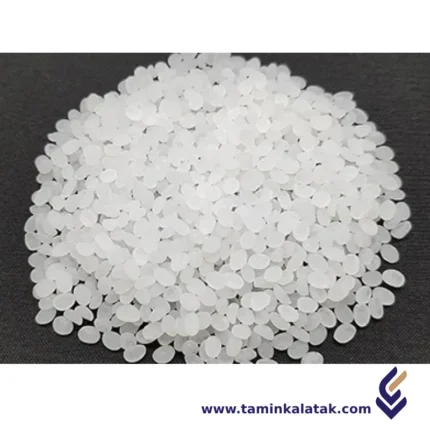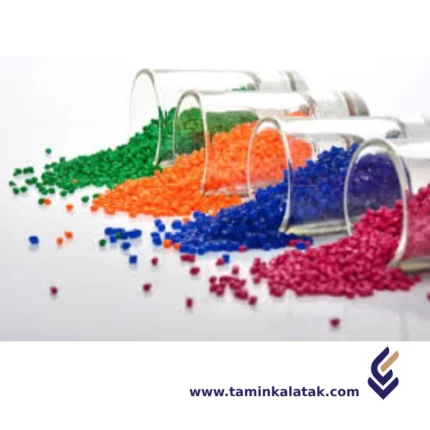Antioxidant Masterbatch
Antioxidant masterbatch is an additive used in plastic processing to protect polymers from thermal and oxidative degradation during manufacturing and throughout the product's lifespan. It consists of antioxidants dispersed in a carrier resin, allowing easy incorporation into various plastic materials. Antioxidants prevent polymer degradation caused by exposure to heat, oxygen, and mechanical stress, which can lead to brittleness, discoloration, and loss of mechanical properties.
Structure Antioxidant masterbatch
The structure of antioxidant masterbatch consists of a combination of antioxidants, a carrier resin, and sometimes additional stabilizers to enhance its effectiveness. The antioxidants, which can be primary (phenolic) or secondary (phosphite or thioester-based), work by neutralizing free radicals and decomposing peroxides that cause polymer degradation. These active components are uniformly dispersed within a carrier resin, which is selected based on compatibility with the target polymer to ensure smooth blending during processing. The carrier resin, often polyethylene (PE), polypropylene (PP), or another polymer-specific base, acts as a medium that facilitates even distribution of antioxidants throughout the plastic material. Depending on the application, the masterbatch may also contain synergistic additives like UV stabilizers or processing aids to provide comprehensive protection against thermal and oxidative degradation. Produced in pellet or granular form, antioxidant masterbatch is designed for easy incorporation into plastic formulations, improving the stability and longevity of the final product.Properties Antioxidant masterbatch
Antioxidant masterbatch possesses several key properties that enhance the stability and durability of plastics during processing and throughout their lifespan. It provides excellent thermal stability, preventing polymer degradation caused by high temperatures during extrusion, injection molding, and other manufacturing processes. The masterbatch also offers strong oxidation resistance, protecting plastics from the harmful effects of exposure to oxygen, which can lead to discoloration, brittleness, and loss of mechanical properties. It is highly compatible with various polymers, including polyethylene (PE), polypropylene (PP), polyvinyl chloride (PVC), and acrylonitrile butadiene styrene (ABS), ensuring easy dispersion and uniform protection. Additionally, it enhances processing efficiency by reducing melt viscosity fluctuations, preventing gel formation, and maintaining the integrity of the plastic material. The presence of synergistic blends of primary and secondary antioxidants further improves its effectiveness, offering long-term stability and enhanced resistance to degradation in applications exposed to heat, mechanical stress, or prolonged storage conditions.Applications of Anti-UV Masterbatch
- Agriculture: Used in greenhouse films, mulch films, and irrigation pipes to prevent UV degradation and extend lifespan.
- Packaging: Protects plastic packaging materials from UV-induced weakening, ensuring product safety and durability.
- Automotive: Applied in plastic components like dashboards, bumpers, and exterior trims to prevent fading and cracking.
- Construction: Used in outdoor plastic products such as roofing sheets, pipes, and synthetic wood to withstand prolonged sun exposure.
- Textile and Fibers: Enhances UV resistance in synthetic fabrics, geotextiles, and outdoor banners to prevent fading and degradation.
- Electrical and Electronic Components: Ensures longevity of plastic casings and insulation materials exposed to sunlight.
Advantages of Anti-UV Masterbatch
- Protects plastics from UV-induced degradation, extending product lifespan.
- Prevents discoloration, brittleness, and surface cracking in outdoor and exposed plastic products.
- Enhances thermal stability, making plastics more resistant to high temperatures.
- Compatible with a wide range of polymers, allowing for versatile applications.
- Cost-effective solution compared to using inherently UV-resistant polymers.
- Easy to incorporate into plastic formulations, ensuring uniform distribution.
Disadvantages of Anti-UV Masterbatch
- May slightly alter the color or transparency of clear plastic products.
- Effectiveness depends on the concentration and type of UV stabilizer used.
- Can increase production costs compared to non-UV-stabilized plastics.
- Prolonged exposure to extreme UV conditions may still lead to gradual degradation over time.
- Some UV stabilizers may have limited efficiency under very high-temperature conditions.
Polishing Masterbatch
Polishing masterbatch is a type of additive used in the plastic industry to enhance the surface quality, gloss, and smoothness of plastic products. It is commonly used in injection molding, extrusion, and film production processes to improve the appearance and feel of the final product.
Structure
Polishing masterbatch is a specialized additive used in plastic processing to enhance the surface finish, gloss, and smoothness of the final product. It typically consists of a carrier resin, which is compatible with the base polymer, along with finely dispersed polishing agents, lubricants, and processing aids. The polishing agents, often inorganic materials like silica or wax-based compounds, help to reduce surface roughness and improve optical properties. Lubricants such as stearates facilitate smoother processing by reducing friction during extrusion or molding. Processing aids optimize the dispersion of the active components and ensure uniformity in the final application. The structure of polishing masterbatch allows it to be easily mixed with the base polymer, enhancing the end product’s appearance, reducing surface defects, and improving overall quality in applications like films, sheets, and molded components.Properties
Polishing masterbatch possesses several key properties that enhance the quality of plastic products. It improves surface gloss and smoothness, giving the final product a shiny and polished appearance. The masterbatch enhances scratch resistance, reducing the likelihood of surface defects and wear over time. It also provides excellent dispersion within the polymer matrix, ensuring uniform distribution and consistent performance. With good thermal stability, it can withstand high processing temperatures without degrading or causing discoloration. Additionally, it offers low friction and anti-stick properties, which facilitate easier processing and demolding. Some formulations may also include anti-static or UV-resistant properties to further enhance durability. Overall, polishing masterbatch is designed to improve the aesthetic and functional properties of plastics while maintaining compatibility with various polymer systems.Applications
- Used in plastic films to enhance gloss and smoothness for better visual appeal.
- Applied in injection molding and extrusion processes to improve the surface finish of plastic products.
- Utilized in automotive interior and exterior parts for a polished and scratch-resistant surface.
- Employed in household and consumer goods to enhance the aesthetic quality and durability.
- Used in packaging materials to improve transparency and surface quality.
- Applied in synthetic fibers and textiles to enhance smoothness and reduce friction.
Advantages
- Enhances surface gloss and smoothness, improving the overall appearance.
- Improves scratch and wear resistance, increasing the lifespan of plastic products.
- Provides uniform dispersion within the polymer matrix for consistent quality.
- Reduces surface friction, aiding in smoother processing and demolding.
- Compatible with a wide range of polymers, making it versatile in applications.
- Helps reduce production defects such as flow marks and rough surfaces.
- Can offer additional functionalities like UV resistance or anti-static properties.
Disadvantages
- May slightly alter the mechanical properties of the base polymer, such as flexibility or toughness.
- Can increase production costs due to the addition of specialized additives.
- In some cases, excessive use may affect transparency or optical clarity.
- Not all formulations are compatible with every type of plastic, requiring specific selection.
- Potential for migration over time, which may affect long-term performance in certain applications.








